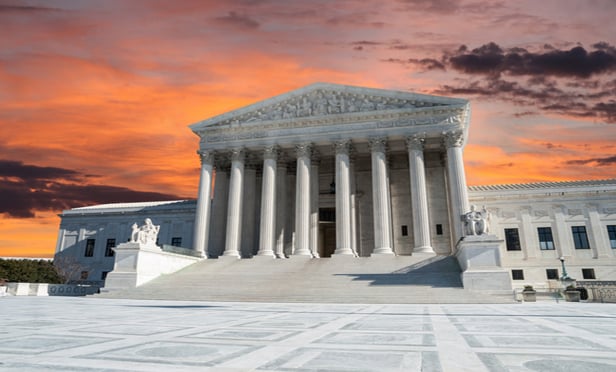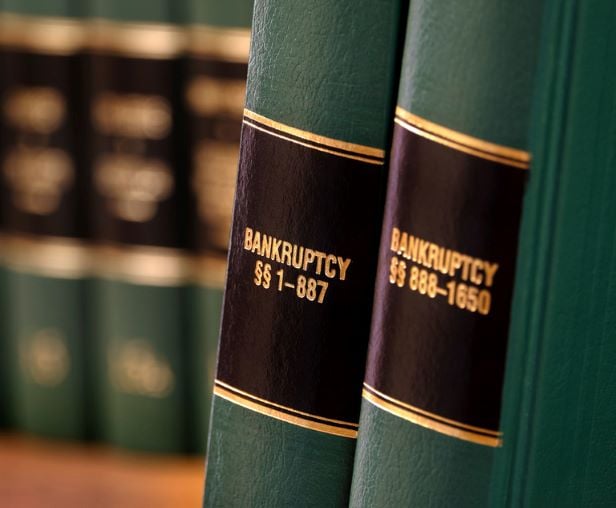Features

A Midsize and Boutique Go-to-Market Checklist
Midsize and boutique firms can significantly increase their chances of competing with large "Goliaths" by building the right systems and processes to streamline pitches and awards, increase realization rates/partner point values, and reduce staff turnover.
Columns & Departments

Co-ops and Condominiums
Condominium Purchaser Was On Inquiry Notice of Unrecorded Easement Condominium Board May Not Depart from Declaration's Funding Provisions Failure to Make Repairs Does Not Excuse Failure to Pay Common Charges
Features

Effectively Managing Partner Autonomy
The past decade has brought a significant rise in internal conflict within partnerships. Partners are wielding their autonomy to speak out (often forcefully) in favor of or opposition to broader firm decisions. This dynamic is leaving many law firms at a disadvantage.
Features

Is FEPA As Impactful As It Was Promised to Be?
FEPA, which amends the federal domestic bribery statute has been touted by some as "the most sweeping and consequential foreign bribery law in nearly half a century." But will it end up being an influential force combatting corruption or a paper tiger?
Features

Federal Circuit Overrules 'Improperly Rigid' Obviousness Test
In an eagerly anticipated decision involving the proper standard for assessing when a claimed design is obvious, the Federal Circuit overruled the Rosen-Durling test that courts and the USPTO have been applying for nearly 30 years, calling the test "improperly rigid" and inconsistent with Supreme Court precedent.
Features

Do FL and CA Talent Agency Law Cover Social Media Influencers and Esports Talent?
If the definition for "artist" under Florida's Talent Agencies Act applies to influencers and esports players, then likely a lot of unlicensed representatives are in violation of the state's statute — and the penalties are pretty serious.
Features

SCOTUS: Prospective Relief Is Only Remedy Necessary to Resolve Unconstitutional U.S. Trustee Fee Scheme
In a recent decision, the U.S. Supreme Court held that the government was not required to refund millions of dollars paid by a Chapter 11 debtor pursuant to an unconstitutional fee scheme between the judicial districts.
Features

Fifth Circuit Agrees With 'Cleary': Corporate Debtors Are Subject to Section 523(a) In Subchapter V Case
Armed with two circuit-level decisions, creditors who lose at the bankruptcy court level may feel encouraged to appeal. As of now, no court in the Second Circuit has addressed the issue and it remains to be seen how other courts will react.
Columns & Departments

Landlord & Tenant Law
Notice Sufficient In Action to Eject Occupant Lease's Taking Clause Excuses Tenant from Payment of Rent<br Village's ETPA Resolution Upheld Landlord's Delay In Providing Itemized Statement Precludes Landlord from Retaining Any Portion of Security Deposit Assignee Liable for Breach of Lease Constructive Eviction and Warranty of Habitability Defenses Rejected
Features

Idaho District Court Imposes First-Ever Bond Order Under the State's Bad Faith Assertions of Patent Infringement Act
The Act is intended to guard against patent trolling and creates a private cause of action for those targeted by bad faith infringement assertions and contemplates two types of relief: remedies and a bond requirement.
Need Help?
- Prefer an IP authenticated environment? Request a transition or call 800-756-8993.
- Need other assistance? email Customer Service or call 1-877-256-2472.
MOST POPULAR STORIES
- The 'Sophisticated Insured' DefenseA majority of courts consider the <i>contra proferentem</i> doctrine to be a pillar of insurance law. The doctrine requires ambiguous terms in an insurance policy to be construed against the insurer and in favor of coverage for the insured. A prominent rationale behind the doctrine is that insurance policies are usually standard-form contracts drafted entirely by insurers.Read More ›
- A Lawyer's System for Active ReadingActive reading comprises many daily tasks lawyers engage in, including highlighting, annotating, note taking, comparing and searching texts. It demands more than flipping or turning pages.Read More ›
- The Brave New World of Cybersecurity Due Diligence in Mergers and Acquisitions: Pitfalls and OpportunitiesLike poorly-behaved school children, new technologies and intellectual property (IP) are increasingly disrupting the M&A establishment. Cybersecurity has become the latest disruptive newcomer to the M&A party.Read More ›
- Abandoned and Unused Cables: A Hidden Liability Under the 2002 National Electric CodeIn an effort to minimize the release of toxic gasses from cables in the event of fire, the 2002 version of the National Electric Code ("NEC"), promulgated by the National Fire Protection Association, sets forth new guidelines requiring that abandoned cables must be removed from buildings unless they are located in metal raceways or tagged "For Future Use." While the NEC is not, in itself, binding law, most jurisdictions in the United States adopt the NEC by reference in their state or local building and fire codes. Thus, noncompliance with the recent NEC guidelines will likely mean that a building is in violation of a building or fire code. If so, the building owner may also be in breach of agreements with tenants and lenders and may be jeopardizing its fire insurance coverage. Even in jurisdictions where the 2002 NEC has not been adopted, it may be argued that the guidelines represent the standard of reasonable care and could result in tort liability for the landlord if toxic gasses from abandoned cables are emitted in a fire. With these potential liabilities in mind, this article discusses: 1) how to address the abandoned wires and cables currently located within the risers, ceilings and other areas of properties, and 2) additional considerations in the placement and removal of telecommunications cables going forward.Read More ›
- Guidance on Distributions As 'Disbursements' and U.S. Trustee FeesIn a recent case from the Bankruptcy Court for the District of Delaware, In re Paragon Offshore PLC, the bankruptcy court provided guidance on whether a post-plan effective date litigation trust's distributions constituted disbursements subject to the U.S. Trustee fee "tax."Read More ›
